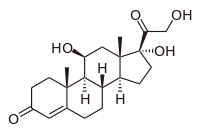
Photo from wikipedia
Activated macrophages adapt their metabolic pathways to drive the pro-inflammatory phenotype, but little is known about the biochemical underpinnings of this process. Here, we find that lipopolysaccharide (LPS) activates the… Click to show full abstract
Activated macrophages adapt their metabolic pathways to drive the pro-inflammatory phenotype, but little is known about the biochemical underpinnings of this process. Here, we find that lipopolysaccharide (LPS) activates the pentose phosphate pathway, the serine synthesis pathway, and one-carbon metabolism, the synergism of which drives epigenetic reprogramming for interleukin-1β (IL-1β) expression. Glucose-derived ribose and one-carbon units fed by both glucose and serine metabolism are synergistically integrated into the methionine cycle through de novo ATP synthesis and fuel the generation of S-adenosylmethionine (SAM) during LPS-induced inflammation. Impairment of these metabolic pathways that feed SAM generation lead to anti-inflammatory outcomes, implicating SAM as an essential metabolite for inflammatory macrophages. Mechanistically, SAM generation maintains a relatively high SAM:S-adenosylhomocysteine ratio to support histone H3 lysine 36 trimethylation for IL-1β production. We therefore identify a synergistic effect of glucose and amino acid metabolism on orchestrating SAM availability that is intimately linked to the chromatin state for inflammation.
Journal Title: Molecular cell
Year Published: 2019
Link to full text (if available)
Share on Social Media: Sign Up to like & get
recommendations!